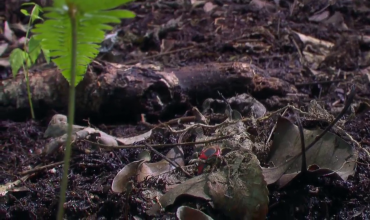-
or
Предыдущая строка субтитров
-
or
Следующая строка субтитров
-
or
Увеличить размер субтитров
-
or
Уменьшить размер субтитров
-
or
Перевести выделенный текст в субтитрах
Краткое содержание
Birds, whose feathers have made them extremely adaptable and enabled them to fly, are the subject of programme five. The courtship flight of the marvellous spatuletail hummingbird is shot at high speed to slow down its rapid wing beats. The male must rest every few seconds due to the energy needed to display his elongated tail feathers. Lammergeiers, by contrast, soar on mountain thermals with a minimum of effort. A red-billed tropicbird bringing a meal back to its chick uses aerial agility to evade the marauding magnificent frigatebirds. Some birds nest in extreme locations to avoid threats from predators. Kenya's caustic soda lakes are a perilous environment for a lesser flamingo chick, while chinstrap penguins breed on a volcanic island off the Antarctic Peninsula. In South Africa, declining fish stocks force Cape gannets to abandon their chicks to search for food, presenting great white pelicans with the chance to snatch an easy meal. Feathers can also be used for display. Male sage grouse square up to one another at their leks, courting Clark's and western grebes perform an elaborate ritual to reaffirm their bond and thousands of lesser flamingos move in a synchronised display. Male birds-of-paradise show off their brilliant plumes in wild courtship displays (some of this footage is from Planet Earth). In West Papua, the small, drab Vogelkop bowerbird uses a different strategy. The male decorates his bower with colourful jewels from the forest, and uses vocal mimicry to attract the attention of a female. Mating is filmed for the first time, the end result of a long and difficult quest featured in Life on Location.

